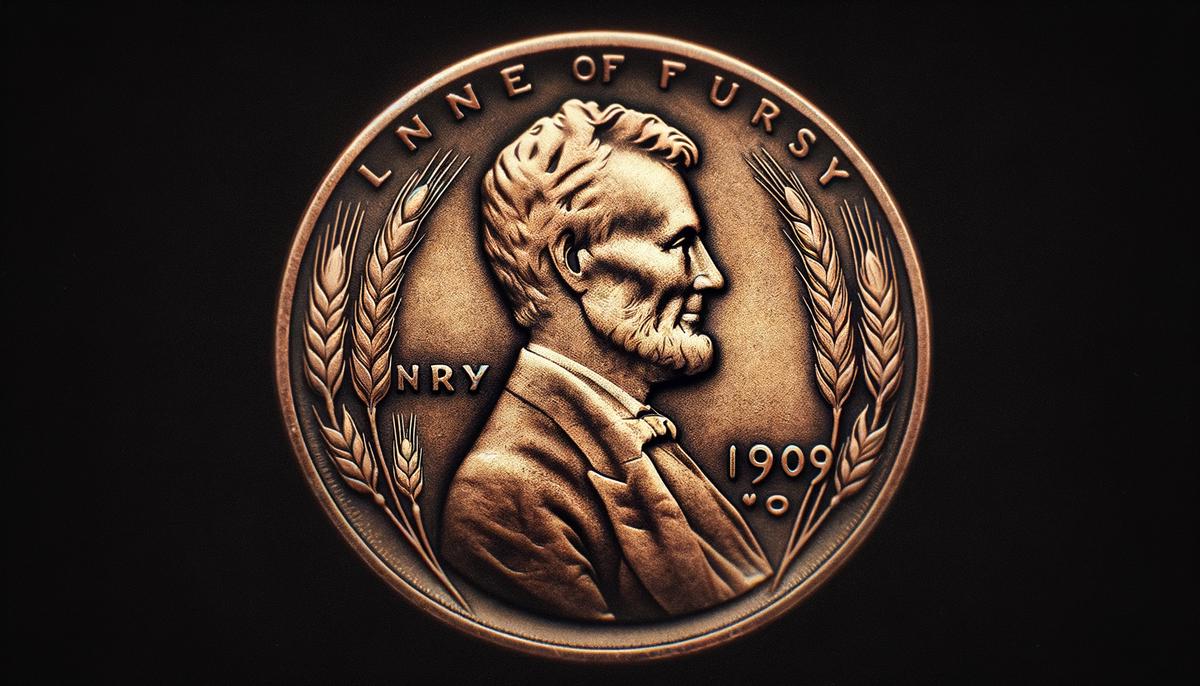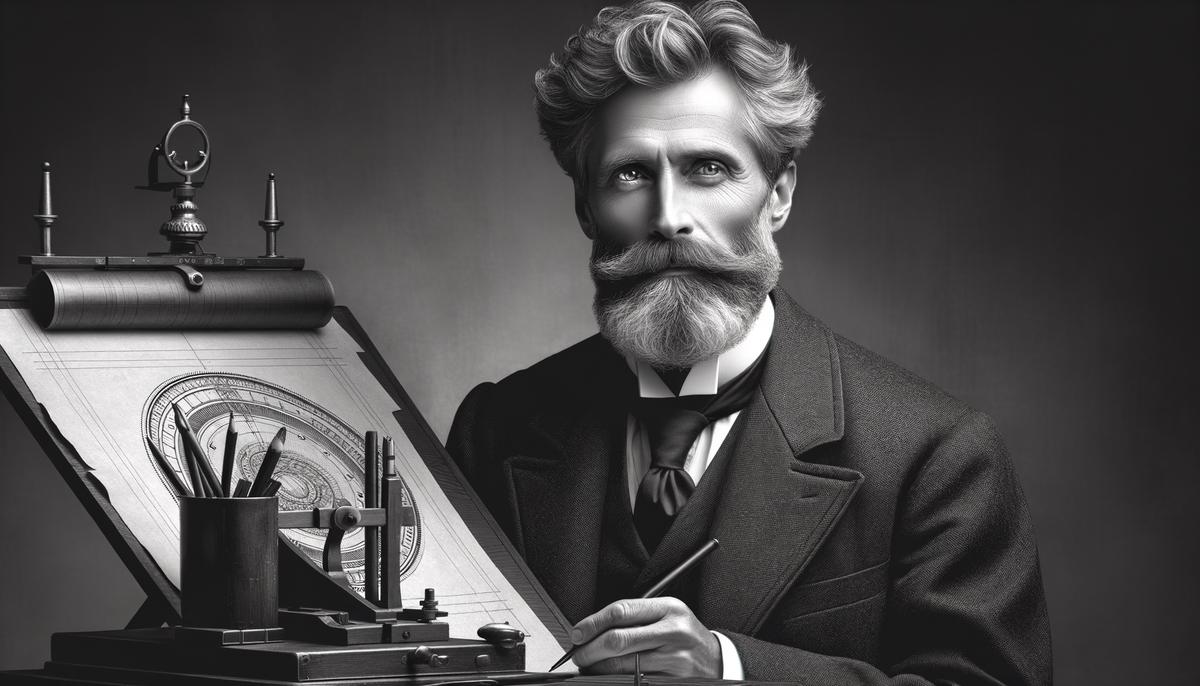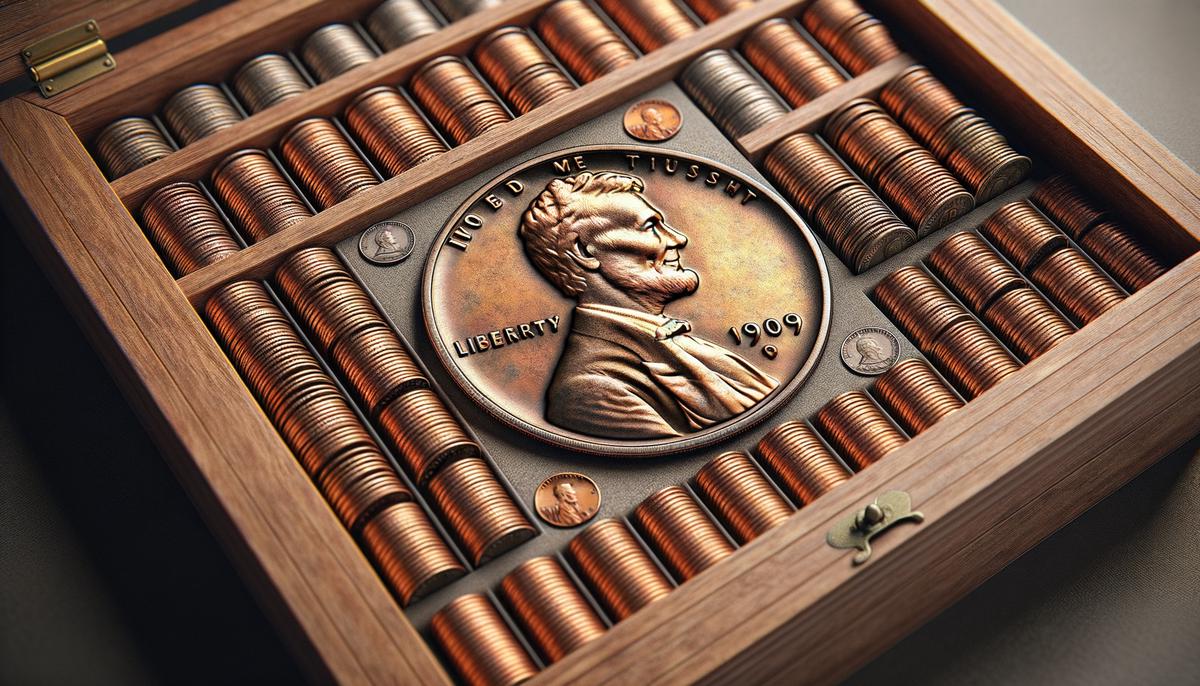The 1909-S VDB Lincoln cent's journey, from its creation to its status as a collector's item, reflects an intriguing chapter in U.S. numismatics. This article examines the penny's design, controversy, rarity, and value, focusing on authenticity and the challenges of counterfeit detection.
Historical Context
1909 marked the 100th anniversary of Abraham Lincoln's birth. To commemorate this, the U.S. Mint introduced a new penny design featuring Lincoln's image, a first for U.S. coinage which traditionally depicted Lady Liberty. Victor David Brenner designed the coin, capturing Lincoln's likeness with remarkable detail.
The new pennies included Brenner's initials, "V.D.B." on the reverse side. Positioned prominently at the bottom, these initials sparked public and official critiques, with some seeing them as inappropriate self-promotion. Mint officials quickly decided to remove the initials from subsequent issues, resulting in two 1909 penny versions: a small batch with "V.D.B." and a larger run without, establishing a clear rarity.
The debate over Brenner's initials brought the practice of artists' signatures on public works into focus. Historically, designers and engravers left their marks on coins, though more discreetly. The 1909 penny highlighted this practice, combining numismatic and art worlds.
San Francisco Mint's involvement further contributed to the penny's scarcity. The Mint issued a variant with limited production numbers – only 484,000 coins with the "S" mintmark and "V.D.B." inscription.
The 1909-S VDB Lincoln cent's journey encapsulates pivotal moments in U.S. history, involving controversy and debates over aesthetic values. It illuminates the challenges in its creation and underscores the enduring allure of coin collecting, with each piece telling a story that merges art, history, and industry.

Design and Controversy
Victor David Brenner's initials on the 1909-S VDB Lincoln cent sparked an intriguing controversy in U.S. numismatics. These three letters influenced the penny's future and coin design on a broader scale.
When the new pennies appeared, public reaction was divided. Many admired the craftsmanship and innovative design honoring Lincoln. However, attention quickly shifted to the initials "V.D.B." on the reverse side. Critics argued they were too conspicuous, suggesting vanity on the sculptor's part. Some viewed them as an unwarranted signature on national coinage, fueled by sensitivities around public monuments typically eschewing overt artist attribution.
Dissent reached the U.S. Mint, where officials saw Brenner's initials as an unwelcome precedent. The apprehension was grounded in Mint policy towards designer recognition and the balance between artistic expression and institutional neutrality.
Amid growing discontent, production of the 1909 pennies with "V.D.B." was halted. The Mint removed Brenner's initials, creating two coin variants within the same year. This prompted a dialogue about artistic recognition versus national identity on coinage, influencing subsequent designs.
The initial run of 1909-S V.D.B. cents became instant rarities, coveted by collectors for their low mintages and unique place in numismatic lore. Scarcity was compounded by hoarding and speculation, securing the coin's status as one of the most sought-after pieces.
The controversy raised broader questions about the visibility of artists' work in the public domain and set a precedent for managing designer recognition in U.S. coinage. Future designers would navigate these tensions, balancing personal attribution with the anonymity often expected in national symbols.
The 1909-S V.D.B. Lincoln cent saga provokes reflection on the intersections between art, identity, and currency. Brenner's initials helped catalyze discussions that would shape the numismatic field, rendering this coin an enduring symbol of both controversy and collectibility.

Mintage and Rarity
Factors Contributing to the Rarity of the 1909-S VDB Penny
The 1909-S V.D.B. Lincoln cent's status as a rarity among the Lincoln cent series and the wider collectors' market is due to a combination of production decisions, public reception, and consequent scarcity.
Mintage Numbers
The key to the 1909-S VDB cent's rarity lies in the limited production of 484,000 coins. Compared to other Lincoln cents, this run was significantly smaller, especially considering the dramatic increase in production numbers for subsequent years.
The "S" mintmark designates production at the San Francisco Mint, which projected lower output numbers compared to its Eastern counterparts for that year.
Controversy and Its Fallout
Following the uproar surrounding Brenner's V.D.B. initials and their subsequent removal, collectors sought to secure what they knew to be a footprint in numismatic history. This early hoarding drastically reduced the coins' circulation, suppressing the already limited supply.
Ongoing Collector Demand
The ongoing allure of the 1909-S V.D.B. cent extends its rarity into modern times. Collectors are drawn to this coin not just for its backstory or age, but as a highly covetable piece marking a turning point in U.S. numismatics.
Market Dynamics
Rarity fuels desire, and desire compels competition among collectors. Auction house sales and private transactions for this cent reveal high demand against essentially static supply. These dynamics have further cemented the coin's status as a key rarity, with prices reflecting both its scarcity and storied past.1,2
Conclusion
The limited mintage numbers, swift alteration and discontinuation of the V.D.B. mark, early and ongoing hoarding behavior, and relentless collector demand have propelled the 1909-S VDB penny into the realm of legend. It remains one of numismatics' most prized and pursued treasures.
Market Value and Collectibility
Market Value Evolution of the 1909-S VDB Penny
The 1909-S VDB Lincoln cent's story is one of remarkable financial growth and enduring appeal in the collectors' market. This section traces the penny's market value trajectory from a scarce coin to a sought-after treasure commanding impressive sums.
Early Days
Initially, the 1909-S VDB penny was just another coin, produced in limited quantities and embroiled in a design controversy. Collectors were excited to complete a collection with all variants rather than for monetary speculation. As coin collecting grew, so did the stature and perceived value of this penny.
Rise in Popularity and Value
By the mid-20th century, the lore of the 1909-S VDB had taken root among collectors, transforming it from an item of passive interest to active pursuit. Transactions related to this penny increased, hinting at its burgeoning market status. The coin's valuation began reflecting its rarity and the narrative around its existence.3
Collector's Dream and Investor's Purse
The late 20th and early 21st centuries witnessed an explosion in the 1909-S VDB cent's market value. Auction records and private sale data highlight a significant increase in price, with pristine examples fetching multiples of early transaction values. This escalation is attributed to the coin's scarcity, history, and heightened appreciation of numismatic rarities and their investment potential.
Factors driving up market value include:
- The allure of completing a Lincoln cent collection with its 'holy grail' piece
- Competitive bidding fueled by increased collector interest
- The intrinsic factors of condition and color
Coins are graded on a scale, with those in mint condition (especially with the original 'Red' color) being exceptionally rare and commanding high premiums.
Condition and Color
Coins graded as MS67RD (Mint State 67, Red) represent the pinnacle of desirability and valuation for this issue. The preservation of the original luster without significant signs of wear marks such specimens as top-tier finds. Auction records indicate these pieces often fetch six-figure sums, solidifying their status within the hobby.4
As a cornerstone of any high-caliber Lincoln cent collection, these specimens underscore the importance of meticulous curation and how condition and color amplify appeal and value. It sets a high bar for collectors seeking to own a piece of numismatic history.
Conclusion
The 1909-S VDB penny's market value evolution is a testament to numismatics' dynamism as a hobby and form of investment. What began as a quirk of minting history has established itself as a titan of the collecting world, desired for its uniqueness and as an icon of Americana. Its value trajectory underscores the potent combination of scarcity, condition, and narrative in bolstering an item's worth over time.
The 1909-S VDB cent remains unchallenged in its legacy: a humble penny transformed into a remarkable testament to collector passion and market dynamics. Whether as the centerpiece of a Lincoln cent collection, a cherished piece of history, or a bright jewel in an investment portfolio, it continues to captivate numismatic enthusiasts worldwide.

Counterfeit Detection
Navigating the Waters of Authenticity: Spotting Genuine 1909-S VDB Pennies
The 1909-S VDB Lincoln cent's high value and historical significance makes it a target for counterfeiting. Collectors must be diligent in identifying authentic coins.
Deciphering the Marks of Authenticity
Genuine 1909-S VDB pennies have distinct characteristics:
- A clear 'S' mintmark indicating San Francisco mint origin
- 'V.D.B.' initials on the reverse
- Precise, consistent lettering with specific font traits
- Detailed, uniform wheat ears on the reverse
The Counterfeit Conundrum
Counterfeit coins often have:
- Vague or inaccurate details
- Improper alignment or placement of engravings
- Artificial wear or aging that doesn't match genuine patterns
- Incorrect weight and metal composition1
The Bedrock of Certification
Reputable grading services like PCGS and NGC provide assurance against counterfeits. They assess, verify, and encapsulate coins with certificates of authenticity. Certified coins are valued and trusted in the collectors' market.
Educated Vigilance: Your Arsenal
Collectors should educate themselves on the 1909-S VDB penny's history, physical characteristics, and nuances. A cautious, informed approach to purchasing builds defense against counterfeits.
The 1909-S VDB Lincoln cent's story reflects the pursuit of value, history, and authenticity in collecting. The coin's rarity due to the controversy over the artist's initials has made it a sought-after piece. It stands as a reminder of the interplay between artistry and heritage in numismatics.
Writio: Your AI content writer for top-notch articles. This page was written by Writio!
Leave a Reply